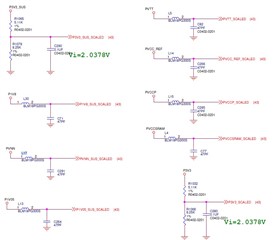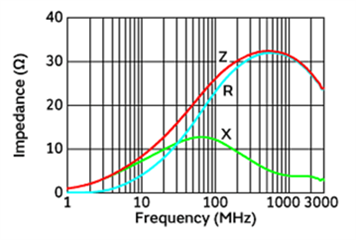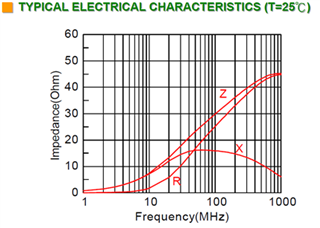Dear TI specialist,
Recently, our client had some questions about the filter on the ADS7830 channel when they reviewed our 2nd source component. The schematic is shown in the figure below. After the power supply passes through the filter, it is directly connected to the ADS7830 as a voltage detection device.


The Main source ferrite bead (BLM18PG300SN1D) specification:
![]()

And the impedance-frequency chart:

The Second source ferrite bead (GMLB-160808-0030S-N8 ) specification:

And the impedance-frequency chart:

Regarding our circuit design, it is a low-pass RC filter.
Thus, according to the low-pass RC filter equation, the cutoff frequency can be demonstrated as below:
![]()
R=30ohm, C=47pF in our schematic.
Then we can get fc around 112.88Mhz.
Under 112.88Mhz condition, we may find out our 2nd source ferrite bead is closer to 30ohm (the impedance-frequency chart I provided) than the main source.
So personally speaking, I think GMLB-160808-0030S-N8 can be qualified as 2nd source because it has better performance under this frequency. And I believe GMLB-160808-0030S-N8 won’t cause any problem for ADS7830. I and our client would like to know What is TI's opinion on this?
We are looking forward to your reply and thanks for any help you may provide.

